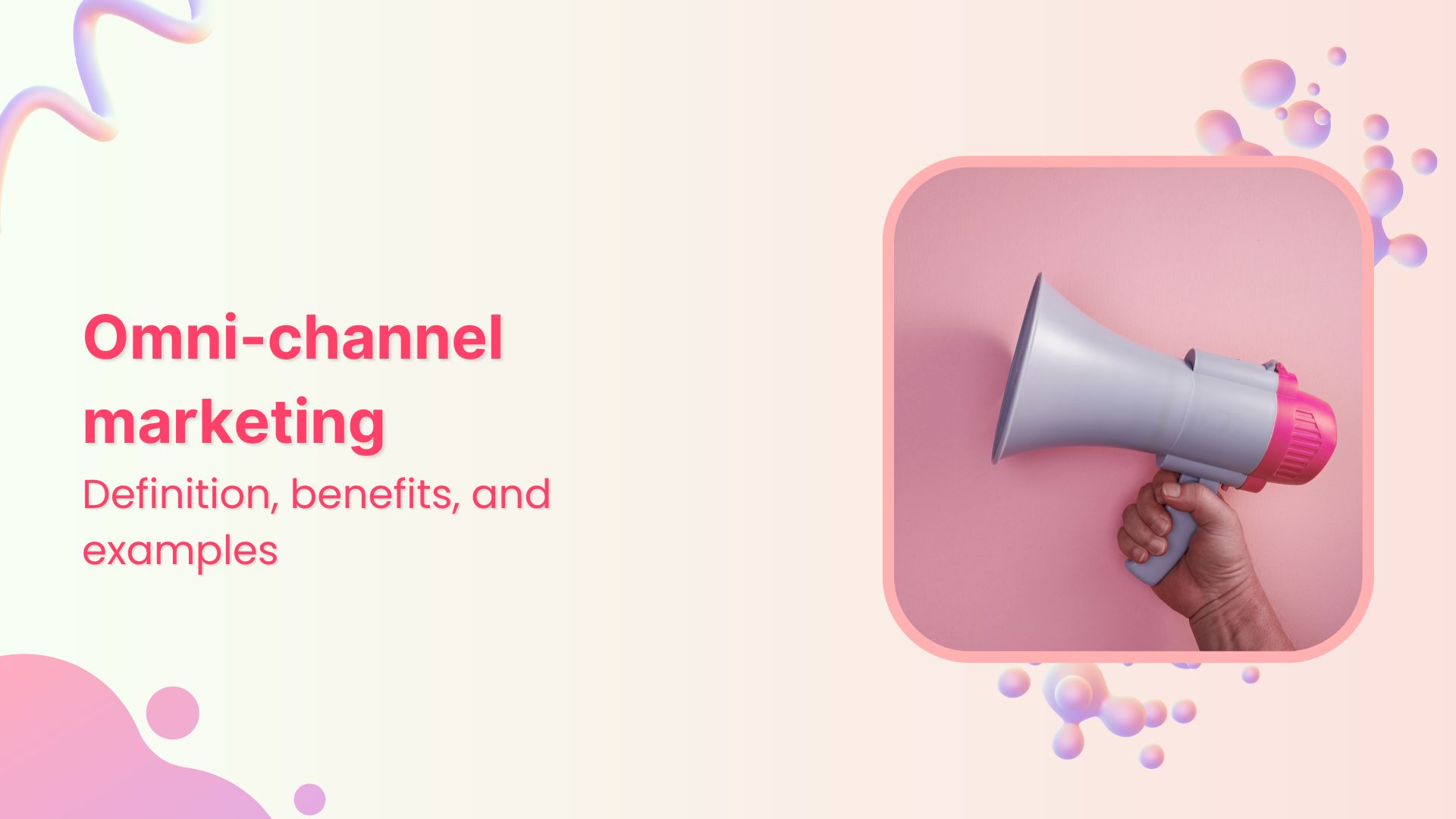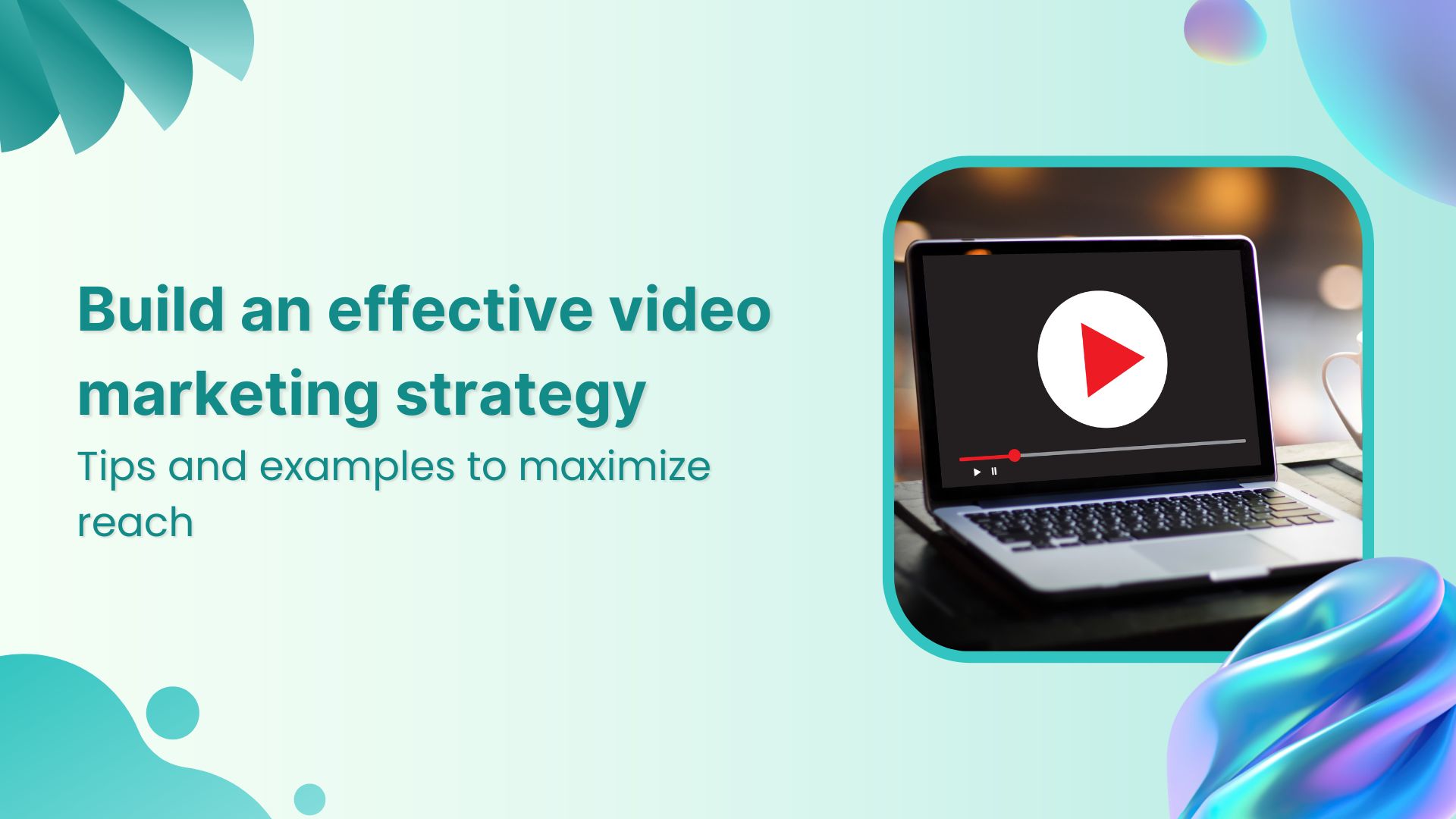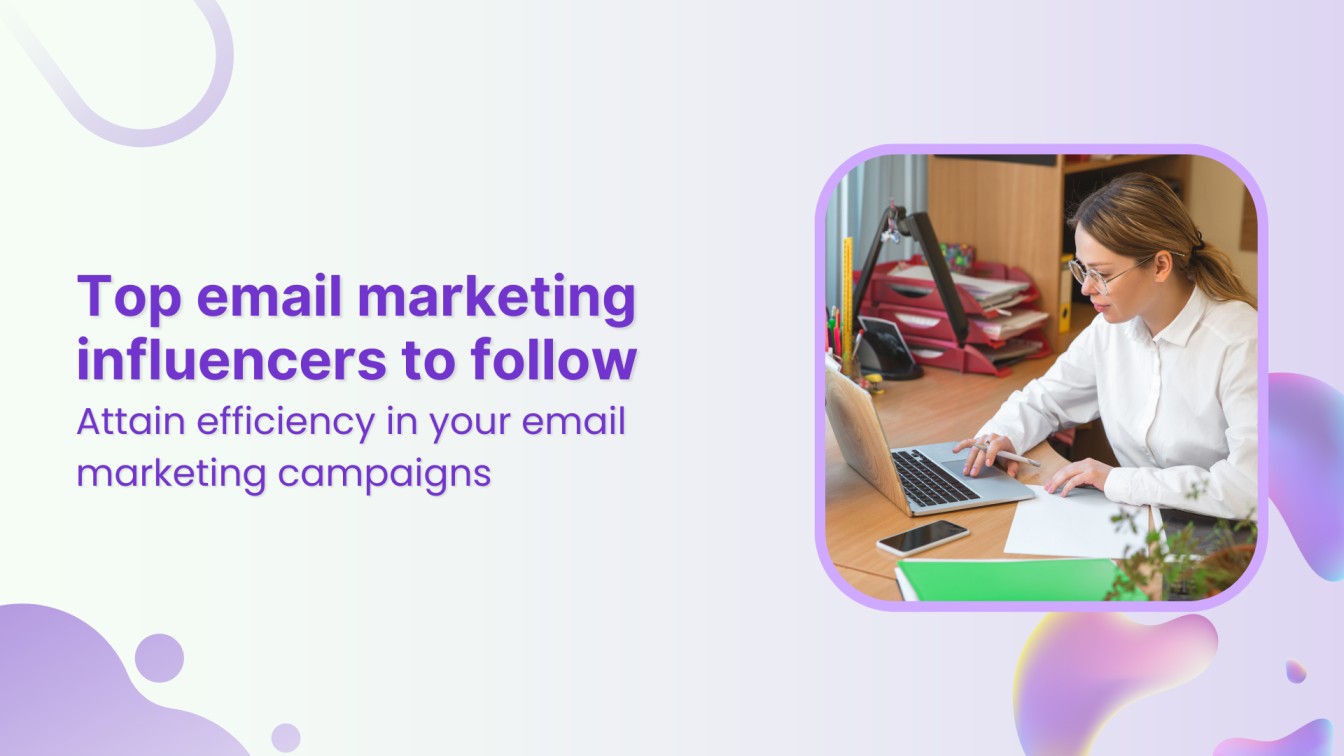Do you have a friend who is a wine wanker?
You know, someone who thinks that he or she is a wine expert and likes to show off their “knowledge” in the company of others? Someone who considers their wine knowledge superior and likes to make other people feel inferior when it comes to wine selection, food pairing, and stuff like that?
Well, if you do, then you should also know that most of the self-proclaimed wine experts out there are not what they think they are. In many cases, the level of “expertise” doesn’t even reach the amateur level.
In fact, studies showed that even experts can’t judge the quality of wine accurately; for example, in the one-now famous study, researchers were even able to fool participants by dyeing white wine red. In another study, researchers discovered that only half of the involved professional wine judges were able to present awards based solely on the quality of the drink.
So why did I begin this article with this? Well, I don’t like wine wankers, and I get frustrated when I see yet another blogger proclaiming themselves “a wine expert” after being a couple of years (or even less!) in the business. However, I was pleasantly surprised one day when I came across a blog called Wine Wankers, and it offered me exactly what I was looking for, in a style that I liked.
So, I decided to use it for this article and show you how a unique vision, style, and content can come together to bring a lot of traffic, sales, and attention. And right now, we’re going to learn how to make sure that your blog can do that, too.
Not Just Another Blog, Please!
Many bloggers who use WordPress to power their businesses know I’m talking about here. “Just Another WordPress Blog” is a standard tagline that is one of the first things that you should remove and replace with your own, unique slogan. This applies to blog content, too.
According to recent estimations, there were about 30.6 million bloggers in the U.S. last year, and the number is projected to rise to 31.7 million in 2020. That’s only one country! The total number of blogs – even ones in English – is truly astonishing, and is very hard to calculate, as hundreds of new bloggers enter the business every day.
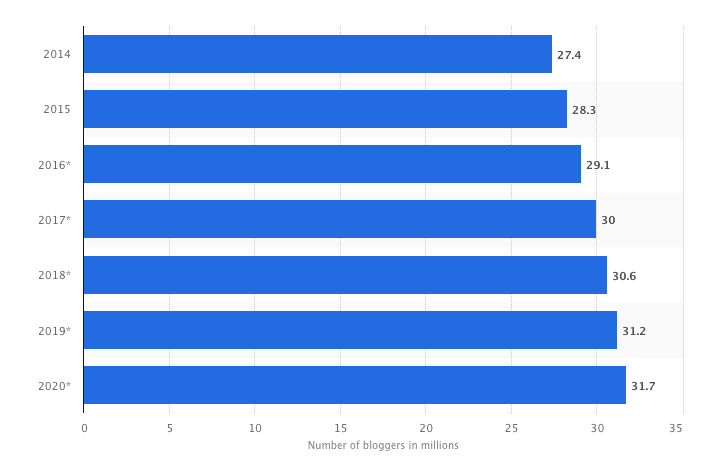


The number of U.S.-based bloggers. Source: Statista
Not only this means fierce competition, but also a challenge of making your blog really interesting and engaging for people. I mean there are certainly thousands of thousands of wine-related blogs out there, and they essentially pursue the same goal is similar ways, so it’s very hard to stand out.
Indeed, coming up with a unique vision for a blog is one of the most challenging things that one must face from the very beginning. However, this is something that you can do. First of all, don’t even think about Googling “What should I blog about?”
Why?
Simple: because Google won’t be out there writing content for you every day. You will, though, and if you don’t listen to yourself and come up with something you truly care about, you’re going to end up among those who lose their passion and enthusiasm pretty quickly. Needless to say, it would be extremely difficult for you to build your audience and grow your business.
This is a situation where Wine Wankers is an excellent example because they’ve approached their mission – educating people about wines – from a unique perspective. As you probably guessed by now, the name of their blog is, and I quote, “lashed in irony,” and their ultimate goal is to share information about wine “without the wankery.” And they do so is a really fun way, and we’re going to explore how you can do this in the next sections.
So what I’m trying to say here is that you should start your blog with a unique vision and mission in mind. The two guys who started Wine Wankers have chosen to take the pretentiousness out of the wine community, which is something that many people can appreciate. So you should do the same: approach content creation from your own perspective, and do so in a meaningful way that your readers can understand and relate to.
No “Just Another Blog” thinking.
How to Grow & Manage Blog Traffic
Now that we’ve got your mission and vision covered, we can talk about specific content creation, management, and distribution techniques that can help you to maximize the traffic and, therefore, chances for success. By making sure that you approach these three processes in a proper (and awesome) way, we can dramatically increase your chances of being a successful blogger.
Use Topics that Your Readers will Find Interesting
While this sounds like a no-brainer, topic selection is actually something that requires research, analysis, and, of course, your knowledge of the blogging area. Let me demonstrate with a simple example.
The following are four article topics from Wine Wankers blog:
- The top 6 tips for ordering wine in a restaurant – 8 comments
- “20% of all wine in the world is fake” – this expert’s guide will save you a fortune” – 97 comments
- The Teabag Method: the new way to chill wine in 3 minutes” – 29 comments
- “Is vegan wine bulls%&#?” – 29 comments.
Let’s now break them down and explain what they mean for your own content creation effort.
Article #1: Advice to avoid a bad choice (and even being embarrassed)
The first respective article deals with something that many wine lovers encounter: buying wine in a restaurant. If you consider yourself as someone who knows a little bit about wines, you can put your knowledge to test when ordering a glass of red (or maybe white, who knows) in your favorite restaurant. On many occasions, you can be joined by others lacking this knowledge and totally relying on you to make a great choice.
“Articles like this are often called “how-to” articles, and their main purpose is to educate the reader on something and help them learn new skills,” says Julia Morrison, a content writer from Supreme Dissertations. “They are great for acquiring links and getting shares on social media because people like to learn new skills.”
In fact, a recent study of 100 million headlines revealed that the list of the top performing articles contained two options that started with “How to:”
- How to make (The average number of Facebook interactions: 2335)
- How to get (Average Facebook interactions: 1704).
Article #2: Advice to save money by avoiding counterfeit wine
This one appeals to the desire to avoid losing money, which is something that most of us can understand. Apparently, counterfeit wine is much more common than one thinks, so this article will indeed be useful for the blog’s target audience (as you can see, it receives the highest number of comments among the listed articles, too, because people don’t like to lose money).
Article #3: A how-to article, also useful
This one describes the Teabag Method, which is supposed to be the new way to chill wine in 3 minutes. While I don’t consider this as something that I’ll use on a daily basis, chances are I’ll try it, and if it works, I’ll even recommend it to other wine enthusiasts I know. So the article achieved its main purpose: to attract attention and be useful to the target audience.
Article #4: For fun, but still relevant (grab the attention with a “hook” in the title)
The fourth article is titled “Is vegan wine bulls%&#?”, and, although it may seem controversial, its main purpose was to spark a discussion. Well, it did attract 28 opinions, which is not that bad, but it’s my belief that if the writer had written a longer article with more questions for the audience, then the number of comments would have been much higher.
The bottom line here is that I, wine enthusiast, who also happens to be the target customer of the blog, have found all of these articles relevant, interesting and useful. That’s what you should do as well: to attract more traffic to your blog, you need quality, reader-centered content that they can consider relevant and useful.
This is what Google wants you to do, too, according to the search engine’s official content guidelines.



But how are you supposed to write it?
Write Your Content Using Language Your Reader Understands
Now that you have an idea of how to attract and grow your blog’s audience with useful content, let’s talk a bit about the style of writing. If you’ve made it this far in this article, you’d agree that so far, I’ve been writing it in a natural, easy-to-understand style that many people use every day. This is not a coincidence; I would like the readers to perceive it this way so it’s easier for them to consume the information and remember the main takeaways.
This style works for many blogs. For example, let’s refer to Wine Wankers again here. Here’s an excerpt (the first two paragraphs) from the abovementioned article called “The top 6 tips for ordering wine in a restaurant” that serves as a great example of their writing style.



Here are some of the features that I can immediately spot:
- Natural language. In fact, it’s the kind of language I would use in a conversation with friends and family
- First person writing. The writer – one of the blog’s founders – uses the first person to tell the story, which is a good idea; for example, it can make a reader feel like he or she is having a conversation with the author (well, kinda)
- The writer establishes authority early. From the very beginning of the article, the author lets the readers know what he’s talking about by mentioning the fact that he worked as a wine waiter. He manages to make it without all the “wankery,” but still in a fun style (in fact, if you browse through the blog, you’ll notice that humor is the heart of Wine Wankers), which is good because no one likes those boring wine descriptions
- Tips for readers. Although it seems that the writer focuses mainly on humor and fun, he immediately goes to tips. For example, the second section in the above image has a good tip because wine waiters know “the intricacies of the food on the menu,” which is exactly what you need to make a good wine choice.
As you can see, it’s easy for me to understand what the writer is talking about because he wrote the text in a style that I understand very well (no wankery and boredom but a simple conversational style).
There are many writing styles for you to try – of course, the right one depends on your target audience – but if you’re not sure how to write for your readers, feel free to use the assistance of writing tools such as WowGrade, Hemingway Editor (a great tool for style checking), Studicus, Grammarly, and Trust My Paper. These tools can help you to find your unique style of writing that will help you to differentiate your blog and stand out from the competition.
Back to ordering wine article. The next great thing that the writer did for making it easy to understand the content was providing awesome visuals. Take a look at this.
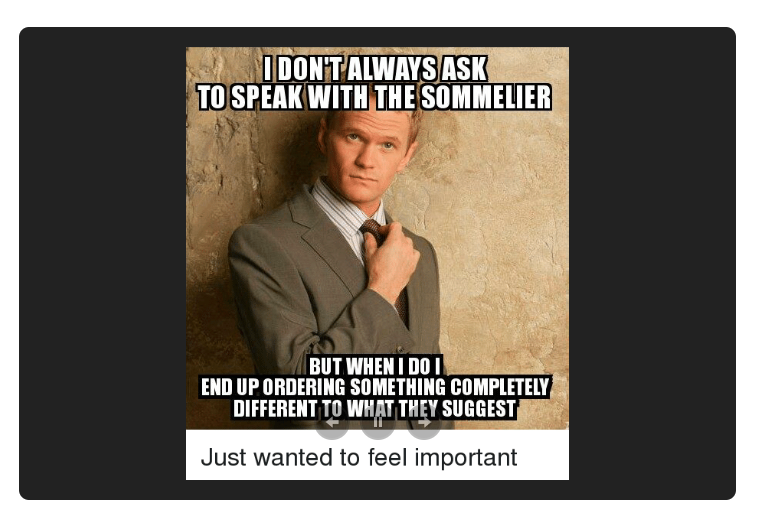


That’s great, right? Many wine enthusiasts with different levels of knowledge of the product will appreciate this, including myself.
Inserting visuals – and/or creating original ones – in a textual content is also a technique that many bloggers use to encourage visitors to read more and share the content. For example, a recent survey found that infographics were the most popular content type shared on social media.
The reason for this performance is simple: humans are visual learners and we prefer images, videos, infographics and stuff like that because they summarize information in a way that’s easy for us to understand.
- Be Consistent in Your Content Production Effort (or Don’t Blog at All)
Consistency is a great quality to have. For bloggers who want to become successful, it’s a must. Google would be reluctant to rank content sources that publish a piece or two and then disappear for a month. The reason is that the search giant is trying to provide the best possible experience for users, so guiding them to a reliable provider of quality content makes perfect sense.
One of the main reasons why many bloggers fail to ensure a consistent content production is a lack of ideas. Indeed, this task becomes increasingly difficult with time, and you need as much inspiration and information from other sources as possible to get your creative juices flowing.
That’s where content discovery tools come in. For example, our own AI-powered Content Studio’s Content Discovery pulls relevant and trending content based on the user’s keyword to keep them updated, inspired, and ready to do the creative part.
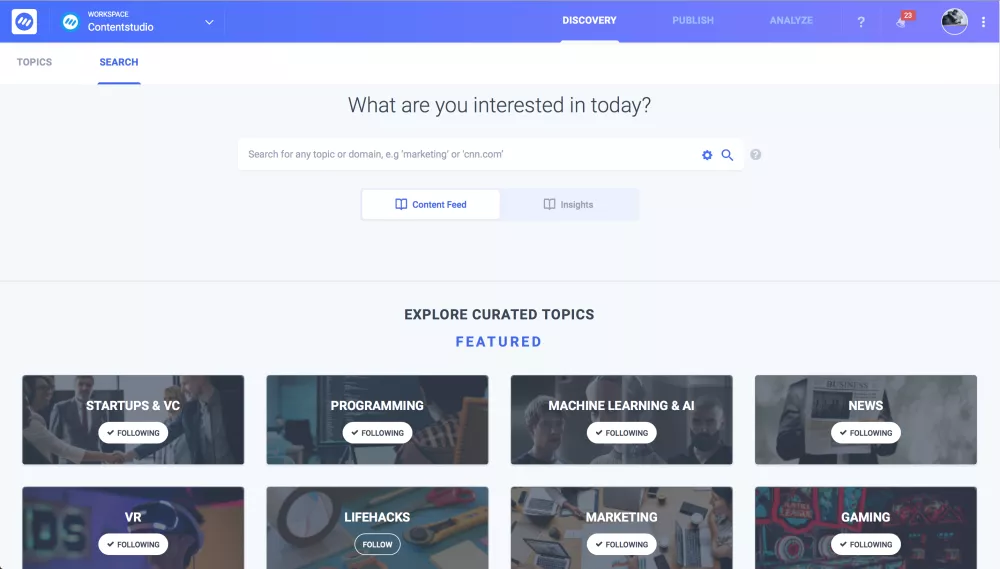


As a result, you can save tons of time for research and coming up with ideas for your content. For example, among other things, you can discover the best-performing content in your interest area and write about from your own perspective, which can help you with getting your own fair share of traffic while that topic is hot.
On top of that, the tool makes it easy to create sharable quotes and passages for your social media with an awesome system that generates captions. As a result, your content creation can become quicker and more efficient.
So, to provide a steady production of content, I recommend you start with two pieces per week and go from there.
- Collect Emails and Get into Email Marketing
You’ve probably heard that email marketing has the highest ROI among all marketing channels, and this is true (in fact, having a large base of subscribers can even make sure that your blog survives without Google!). That’s why most of the blogs you’ve come across have email signup forms.
I recommend you get a signup form yourself and start collecting the emails of your visitors. However, you’ve got to remember that if you offer a newsletter, you have to share the information your subscribers need. In fact, according to a recent survey by MarketingSherpa, irrelevant and “too many emails” are the top two reasons why people unsubscribe from newsletters.
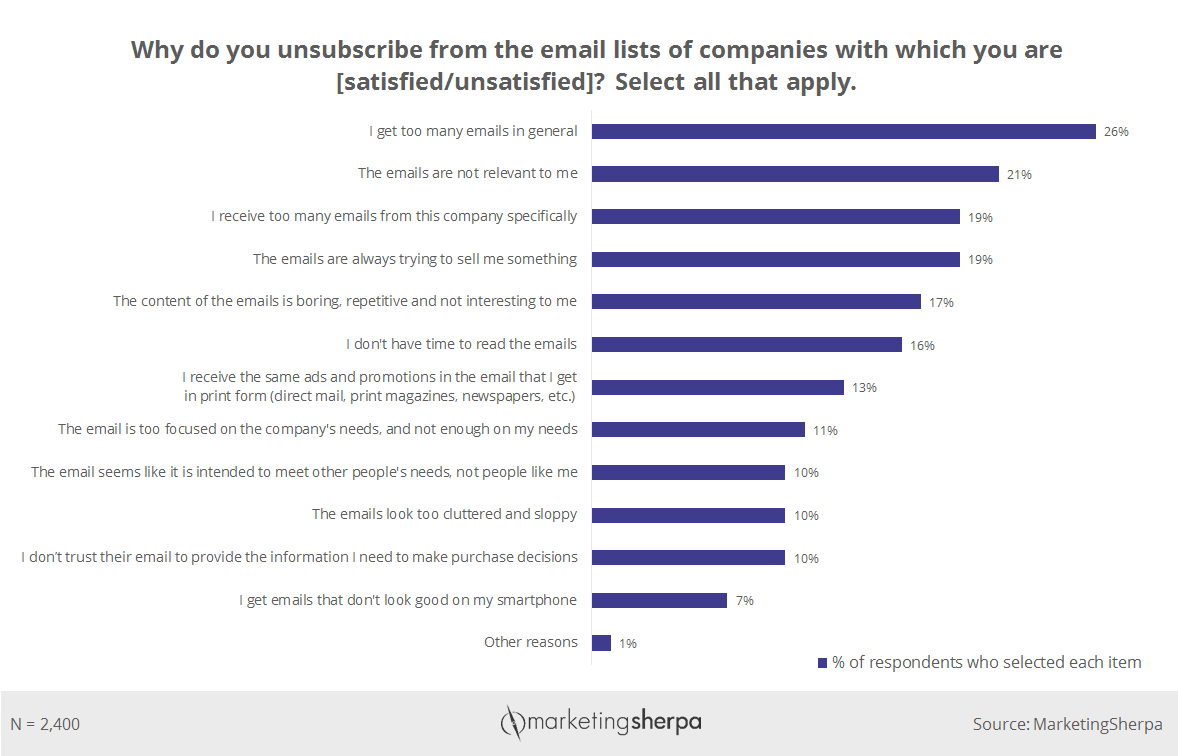


Source: MarketingSherpa
So, create content consistently and share it with them via a weekly or a bi-weekly newsletter. Try placing the signup form at the bottom of blog posts and encourage to subscribe with a CTA like “Would you like to receive content like this from me?”
Remember: the more people you have in your subscriber list, the less you depend on paid advertising platforms. Besides, a person who’s chosen to subscribe to your newsletter is typically someone who is genuinely interested in the topic of your blog (by the way, I’m a proud subscriber of several blogs), so you can focus your lead nurturing efforts on them.
- Learn Where Your Traffic is Coming From
Are you promoting your blog on social media?
Who am I kidding, of course, you are. In fact, about 96 percent of bloggers use social media to drive traffic to their websites, according to this Orbit Media’s Annual Blogger survey.
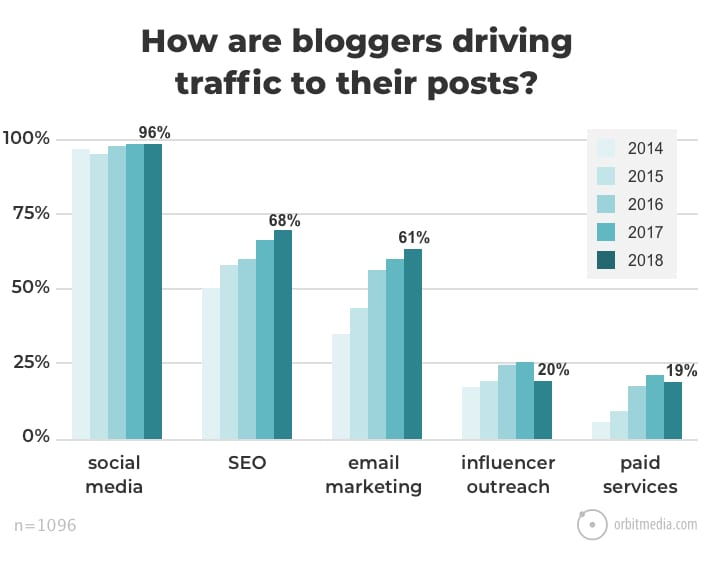


Source: Orbit Media
When you share links with brand new articles on your Facebook page (or any social media network, for that matter) consistently, you need to be able to attribute your blog’s traffic to certain links. This way, you’ll know what content performs better on social media, and this could help you with improving your overall content strategy.
To know how your links perform (for example, you can identify a traffic source, the name of the campaign, etc.) as well as to measure the performance of your campaigns, you can use a link tracking and optimization tools like Replug.
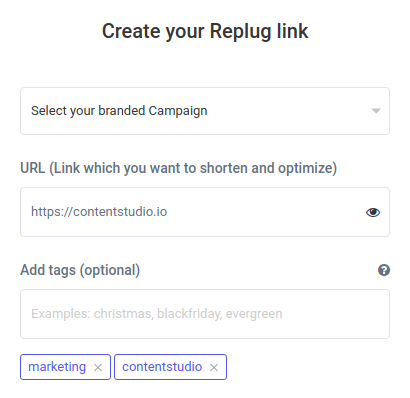


It displays the number of times the link that you shared has been clicked on and where it has been shared by social media users. As a result, you can determine the best-performing links that drive the most traffic to your blog. On top of that, you can also add a call to action to encourage people to click on the links you shared.
Wrapping Up
Just like many bloggers, you have to do something different to beat your competition. For example, by approaching a knowledge area from a unique angle and writing about it in a style that your target audience appreciates, you can get a good start for your blogging business. That’s exactly what Wine Wankers did, and they won a lot of readers because they are unique and give their readers the information they need in an appropriate manner.
As you can see, things get a little bit complicated as you begin to develop your blog further, but you’ve got to remember that blogging is a profession that requires appropriate time and effort investments. Hopefully, I’ve given you the info you need to understand what it takes to start some serious blogging and make a roadmap to extraordinary success. Happy blogging and remember: no wankery!
Guest blog post by Estelle Liotard who is a wine enthusiast and a professional content writer with more than ten years of experience. She thinks that the most effective content is simple, easy to understand, and addresses real experiences and situations. Estelle has contributed to many blogs, including Grab My Essay, and currently works as an editor at Best Essay Education.
Wasiq Naeem
Wasiq Naeem is a content and digital marketing veteran who is passionate about his writing. Extensive research and producing high-quality content is just another day at the office for him.


